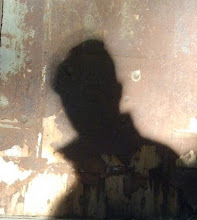
As scenic vacations go, Yosemite is spectacularly breathtaking.
Whether you are viewing the awesome rock formations from an overlook or standing
in the valley staring up at a waterfall. In the world of hantaviruses, Sin Nombre
virus (SNV) is equally breathtaking. Literally. In the spring of 1993, in the
Four Corners area of the US, the Sin Nombre virus killed two young,
accomplished long distance runners. They died of sudden respiratory failure and
the only clue was that the two victims were engaged to be married. A week later
another couple became seriously ill with the same air gasping symptoms. One was
a relative of the very first case. The damage to the victim's lungs looked like they had inhaled
World War I nerve gas. When investigators visited the home of the first two
cases they found no obvious source, but noted that they place was heavily
infested with rodents. El Nino’s rains resulted in a bumper crop of pine nuts,
a staple for the white-footed deer mouse and their numbers had doubled since the
previous year.
After an incubation period from one to five weeks the first symptoms to appear that aren’t much different from the flu and include fever,
chills, headache and severe muscle aches. Sometimes stomach pain and dizziness
occur. Several days later respiratory symptoms appear.
The life sustaining oxygen membrane in the lungs no longer works. Fluid
collects and patients die of oxygen starvation. Most hantavirus cases in the US
have occurred in the southwest but another strain was discovered in Maryland
and we have had two cases in New York, the latest was just last year: (
http://abclocal.go.com/wabc/story?section=news/local/long_island&id=8211238)
Back in June of 1993 the CDC began testing serum from the Four
Corners victims of SNV against a battery of viruses from across the world
looking for cross-reactivity as a clue to Sin Nombre’s identity. They got reactions
with two viruses from halfway across the world, Haantan and Seoul. These
viruses were discovered during the Korean War and were known to cause kidney
disease. Sin Nombre was their cousin and was uniquely adapted to survive in the
urinary systems of mice, Peromyscus maniculatus to be exact,
the white-footed deer mouse. Disturbing mouse nests or sweeping urine-laden
dust aerosolizes the virus and brings it into contact with sensitive lung
cells. To read the full Sin Nombre virus investigation story see CJ Peter's
book, Virus Hunters, chapter 1.
Curry Village is a camp comprised of canvas tent-cabins in
the valley of Yosemite. It is affordable and popular with families. Thus far
six cases and two deaths from SNV have been confirmed in visitors to the park. Four
were known to have stayed in Curry Village. Others are under investigation and
an alert was sent to state health departments because an estimated 10,000
people from across the nation stayed at Curry Village from June to August this
year.
Prevention begins with sealing your house to prevent mouse
invasion, a difficult task. Even here in the Big Apple the industrious little critters
routinely make there way into apartment buildings. Trapping (I use live, “green”
mouse traps) and good food hygiene are the next steps, like disposing of trash
in a receptacle that rodents can’t penetrate. That includes food in your home, using
thick plastic, metal or glass canisters to store food. Caution is advised when cleaning areas
of mouse habitation. Ensure proper ventilation, spray the area first with a
disinfectant, like dilute bleach. This will inactivate viruses and keep dust levels
down. Wearing personal protective equipment to include a mask, goggles and
gloves is also a good idea. See full CDC recommendations here:
http://www.cdc.gov/rodents/cleaning/index.html
 As scenic vacations go, Yosemite is spectacularly breathtaking.
Whether you are viewing the awesome rock formations from an overlook or standing
in the valley staring up at a waterfall. In the world of hantaviruses, Sin Nombre
virus (SNV) is equally breathtaking. Literally. In the spring of 1993, in the
Four Corners area of the US, the Sin Nombre virus killed two young,
accomplished long distance runners. They died of sudden respiratory failure and
the only clue was that the two victims were engaged to be married. A week later
another couple became seriously ill with the same air gasping symptoms. One was
a relative of the very first case. The damage to the victim's lungs looked like they had inhaled
World War I nerve gas. When investigators visited the home of the first two
cases they found no obvious source, but noted that they place was heavily
infested with rodents. El Nino’s rains resulted in a bumper crop of pine nuts,
a staple for the white-footed deer mouse and their numbers had doubled since the
previous year.
As scenic vacations go, Yosemite is spectacularly breathtaking.
Whether you are viewing the awesome rock formations from an overlook or standing
in the valley staring up at a waterfall. In the world of hantaviruses, Sin Nombre
virus (SNV) is equally breathtaking. Literally. In the spring of 1993, in the
Four Corners area of the US, the Sin Nombre virus killed two young,
accomplished long distance runners. They died of sudden respiratory failure and
the only clue was that the two victims were engaged to be married. A week later
another couple became seriously ill with the same air gasping symptoms. One was
a relative of the very first case. The damage to the victim's lungs looked like they had inhaled
World War I nerve gas. When investigators visited the home of the first two
cases they found no obvious source, but noted that they place was heavily
infested with rodents. El Nino’s rains resulted in a bumper crop of pine nuts,
a staple for the white-footed deer mouse and their numbers had doubled since the
previous year.



No comments:
Post a Comment